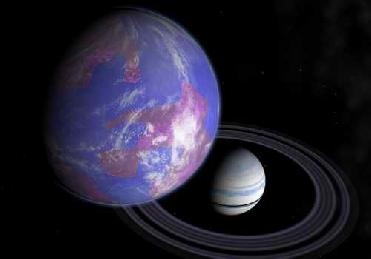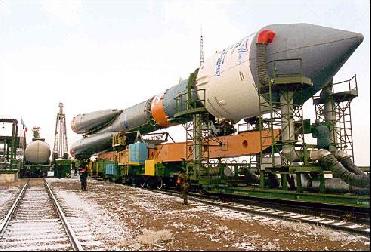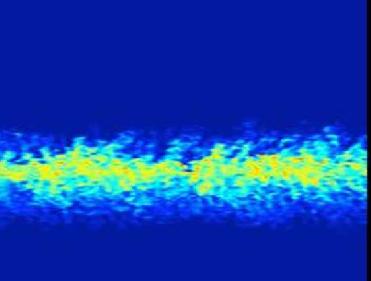
An artist's representation of a gas giant exoplanet with a habitable moon Credit: Andy McLatchie
LONDON (BNS): Thanks to research conducted by astronomer Andy McLatchie David Kipping, of the University College London (UCL), it has become easier to detect whether moons outside the solar system have the potential to support life.
David Kipping, whose study has been partly funded by the country�s Science and Technology Facilities Council (STFC) has found that such moons can be revealed by looking at wobbles in the velocity of the planets they orbit. His calculations, which appeared in the Monthly Notices of the Royal Astronomical Society issue dated December 11, not only allow scientists to confirm if a planet has a satellite but to calculate its mass and distance from its host planet - factors that determine the likely habitability of a moon.
�Out of the 300+ exoplanets (planets outside the Solar System) currently known, almost 30 are in the habitable zone of their host star but all of these planets are uninhabitable gas giants. The search for moons in orbit around these planets is important in our search for alien life as they too will be in the habitable zone but are more likely to be rocky and Earth-like, with the potential to harbour life,� the UCL said.
�Until now astronomers have only looked at the changes in the position of a planet as it orbits its star. This has made it difficult to confirm the presence of a moon as these changes can be caused by other phenomena, such as a smaller planet. By adopting this new method and looking at variations in a planet's position and velocity each time it passes in front of its star, we gain far more reliable information and have the ability to detect an Earth-mass moon around a Neptune-mass gas planet,� David Kipping said.
If some of these gas giants found outside the Solar System have moons, like Jupiter and Saturn, there's a real possibility that some of them could be Earth-like, the UCL said.
According to the university, the appearance of wobbles in a planet's position and velocity are caused by the planet and its moon orbiting a common centre of gravity. While the old method of looking at the wobbles in position allowed astronomers to search for moons, it did not allow them to determine either their mass or their distance from the planet, the UCL said.
Professor Keith Mason, Chief Executive of the Science and Technology Facilities Council, said, �It's very exciting that we can now gather so much information about distant moons as well as distant planets. If some of these gas giants found outside our Solar System have moons, like Jupiter and Saturn, there's a real possibility that some of them could be Earth-like.�
 Previous Article
Previous Article Next Article
Next Article












The Indian Air Force, in its flight trials evaluation report submitted before the Defence Ministry l..
view articleAn insight into the Medium Multi-Role Combat Aircraft competition...
view articleSky enthusiasts can now spot the International Space Station (ISS) commanded by Indian-American astr..
view article